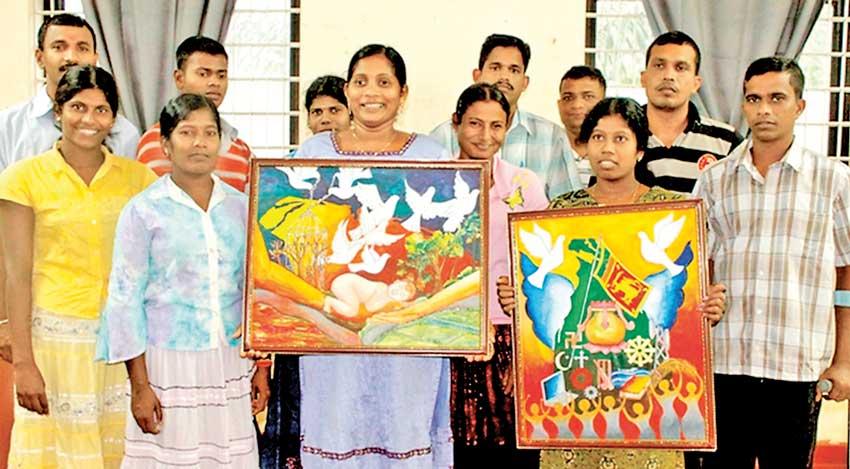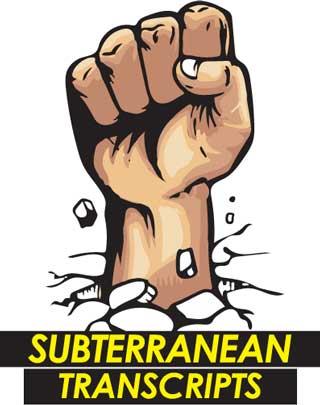20 Oct 2022 - {{hitsCtrl.values.hits}}


Rehabilitation is a word that presumes a previous state of perceived acceptance or agreement. Its etymology is interesting and revealing, deriving from re- “again” or “to turn” and habitare - “make fit” which in turn comes from the Latin habilis - “easily managed, fit.” In other words, rehabilitation is about restoring someone or something to a previous state; someone who has or something that has strayed from the norm is reined back into a controlled/controllable space or social architecture.
This space or arrangement obviously has rules which if infringed upon warrant disciplining of one form or another. One may argue that this is a necessary evil because complex societies ‘must have’ states or structures of governance, rulers and the ruled, and therefore rules of engagement where certain freedoms are conceded to institutions of authority for smooth functioning of society. A lot of loaded terms there of course not least of all because arrangements are less agreed upon than are imposed, historically speaking.
 This is the problem of the status quo, things as they are and things to which people and things are required to return or be returned and therein contained. The underlying assumption is that what exists is good or is better than any alternative. This is why rehabilitation is seen as a must. The Europeans massacred people, perpetrated genocide, erased cultures and forced cross and bible on people to obtain and thereafter preserve a status quo. Rehabilitation is the unspoken cuss word of evangelism at gun point or extraction of compliance by preying on vulnerabilities. It is the unspoken dogma of IMF-WB-WTO operations on behalf of corporate capital and, as of now, the strategic interests of the USA (the EU is now, after ‘Ukraine,’ a vassal entity).
This is the problem of the status quo, things as they are and things to which people and things are required to return or be returned and therein contained. The underlying assumption is that what exists is good or is better than any alternative. This is why rehabilitation is seen as a must. The Europeans massacred people, perpetrated genocide, erased cultures and forced cross and bible on people to obtain and thereafter preserve a status quo. Rehabilitation is the unspoken cuss word of evangelism at gun point or extraction of compliance by preying on vulnerabilities. It is the unspoken dogma of IMF-WB-WTO operations on behalf of corporate capital and, as of now, the strategic interests of the USA (the EU is now, after ‘Ukraine,’ a vassal entity).
Let’s say, for argument’s sake, that in less pernicious contexts, some level of cogency is necessary and therefore the errant need to be contained. Such needs are typically felt more acutely during and in the aftermath of a conflict, especially a bloody one. In Sri Lanka, in recent times, two conflicts demanded rehabilitation. The first, the UNP-JVP conflagration in the late 80s where the UNP-led government set up torture chambers all over the country, K-points they were called (K for ‘Killing’). Less informal were the facilities available for dealing with terrorist suspects, but atrocities there were, especially during the first two decades of the struggle against the LTTE (hardly ever talked of, and no one asks ‘why not?’).
A formal rehabilitation process was in place by the time the LTTE was militarily defeated. Those who surrendered or were captured (and this included hundreds of child soldiers) were offered education and marketable skills and re-integrated into society
A formal rehabilitation process was in place by the time the LTTE was militarily defeated. Those who surrendered or were captured (and this included hundreds of child soldiers) were offered education and marketable skills and re-integrated into society. There were no formal provisions for monitoring them thereafter to my knowledge, but it is safe to assume that tabs were kept, defensible to a point considering the nature of the threat and the history of the LTTE.
A legal entity, therefore, one may argue, is better than not having one. That however is where the applause for the draft bill for a Bureau of Rehabilitation must stop.
The stated objective is to ‘rehabilitate drug dependent persons, ex-combatants, members of violent extremist groups and any other groups of persons who request or [are] required by law to be provided treatments and rehabilitation by adopting various therapies in order to ensure effective reintegration and reconciliation through developing socio-economic standards.’ [Part I, Section 3 and 4(b)].
The draft refers to a minister but does not state the ministry. The draft merely says ‘the ministry to which the Bureau is assigned,’ perhaps because ministries are made, broken and dissolved as per the prevailing political culture, but that’s not an excuse given the gravity of the exercise. We do know that the subject was previously handled by the Commissioner General of Rehabilitation, under the President, and using the Public Security Ordinance and Prevention of Terrorism Act. How drug-dependency, essentially a medical condition that ought to come under the purview of the Ministry of Health is coupled with public security and terrorism is mind boggling.
The drafters have inserted vague language and this is what is most worrisome. What, for example, are ‘any other groups’? Who decides who requires rehabilitation? Yes, it says ‘required by law’ but then again, there is the quiet insertion of ‘requests’. In practice, people, especially those who are seen by the state as somehow being out of the loop, can be persuaded to request rehabilitation, especially in tense (or worse) political contexts.
Part I, Section 4 (d), under ‘powers, duties and functions,’ allows the Bureau to mobilize those who are undergoing treatment or rehabilitation for activities that ‘productively enhances the economy.’ No mention of such people being given the option to refuse such deployment here. That’s a green light for a prison-industrial complex akin to the one perfected by the USA!
The document also empowers the Bureau to monitor those who have been ‘reintegrated into society after treatment and rehabilitation.’ This, again, could be understood in the case of ex-combatants in the immediate aftermath of a bloody conflict, but the text is open-ended. There’s no provision for closure on such surveillance. Why should anyone who has been certified as rehabilitated be watched thereafter and until he/she dies?
The Bureau can set up any number of centres for rehabilitation (legally sanitized K-Points?) and will keep all records confidential (makes sense in the case of drug-dependents, ex-combatants, but then again what if these are facilities that are expressly political?).
What is most disconcerting is that the President, upon the minister’s request can designate all security forces ‘as authorized members of the forces who may exercise, perform and discharge the powers, duties and functions under this Act’ as long as the specifics are gazetted. [Part III, Section 17]. No caveats as to context here, even if context were excuse enough. In other words, what the Premadasa regime did in 88-89 would now be given legal standing. Wouldn’t make a difference to the victims, except for the veneer of accountability offered by ‘legality’ which, history has shown, can easily be shoved aside (remember the Bill Against Vexatious Prosecution passed by the United Kingdom to make it possible for the military to kill, torture, destroy and displace with impunity?).
Indeed, Part V, Section 21 (2) has given a carte blanche to the Council administrating the Bureau to get away with anything as long as there is good faith. Well, that’s pretty subjective. The White Man’s Burden, for example, could be dismissed as a good-faith thing and so too the forcible conversion of ‘heathens’ or thrusting the 13th Amendment down Sri Lanka’s throat. How about redress for error (generous word, that)? Moreover, the minister can make any regulations to carry out and give effect to the principles and provisions of the Act and such will stand until and unless Parliament does not approve three months later. Coupled with ‘good faith’ this could allow all manner of violations which the victims cannot protest or obtain redress for.
The draft bill, taken in totality, is strewn with powers, provisions and caveats that are all about disciplining and punishing with impunity. Rehabilitation is a sanitizer, essentially. Sinister, certainly.
[email protected]
www.malindawords.blogspot.com
10 Jan 2025 54 minute ago
10 Jan 2025 1 hours ago
10 Jan 2025 2 hours ago
10 Jan 2025 3 hours ago
10 Jan 2025 3 hours ago